-
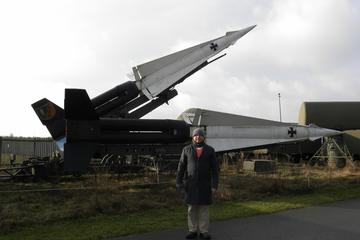 Bundeswehr Museum of Military History
Bundeswehr Museum of Military History The Bundeswehr Museum of Military History shows the impact of the military on culture throughout history with a focus on aerial warfare. The exhibits explain how aerial warfare has changed our views on war through several different topics, such as crossing bor
Bundeswehr Museum of Military History
Bundeswehr Museum of Military History The Bundeswehr Museum of Military History shows the impact of the military on culture throughout history with a focus on aerial warfare. The exhibits explain how aerial warfare has changed our views on war through several different topics, such as crossing bor
-
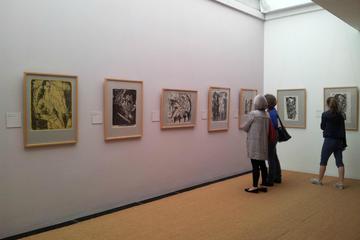 Brucke Museum
Brucke Museum The Brücke Museum in Berlin is dedicated to the work of the artist group Die Brücke (the Bridge) from 1905 to 1913. The group was formed in Dresden by four students, Ernst Ludwig Kirchner, Fritz Bleyl, Karl Schmidt-Rottluff and Erich Heckel, when its members started experimenting wit
Brucke Museum
Brucke Museum The Brücke Museum in Berlin is dedicated to the work of the artist group Die Brücke (the Bridge) from 1905 to 1913. The group was formed in Dresden by four students, Ernst Ludwig Kirchner, Fritz Bleyl, Karl Schmidt-Rottluff and Erich Heckel, when its members started experimenting wit
-
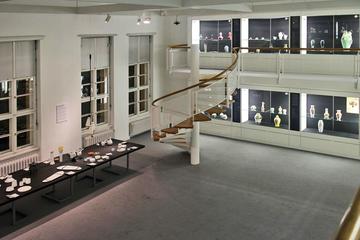 Brohan Museum
Brohan Museum The Brohan Museum is dedicated to art from the Art Nouveau, Art Deco, and Functionalism periods. Rooms are set up with furniture, table settings, vases, pictures, carpets and sculptures to create an authentic view of living spaces from this time period. The museum highlights works by
Brohan Museum
Brohan Museum The Brohan Museum is dedicated to art from the Art Nouveau, Art Deco, and Functionalism periods. Rooms are set up with furniture, table settings, vases, pictures, carpets and sculptures to create an authentic view of living spaces from this time period. The museum highlights works by
-
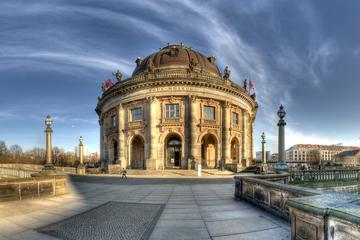 Bode Museum
Bode Museum As one of five museums on Museum Island, the Bode Museum, formerly the Kaiser- Friedrich Museum, houses three separate collections of sculptures and treasures: the Museum of Byzantine Art (art from the West-Roman and Byzantine Empires from the 3rd to the 15th century), the sculpture co
Bode Museum
Bode Museum As one of five museums on Museum Island, the Bode Museum, formerly the Kaiser- Friedrich Museum, houses three separate collections of sculptures and treasures: the Museum of Byzantine Art (art from the West-Roman and Byzantine Empires from the 3rd to the 15th century), the sculpture co
-
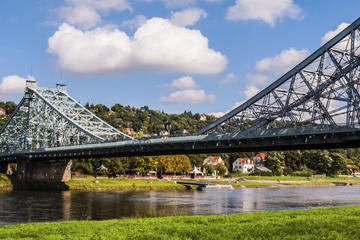 Blue Wonder Bridge
Blue Wonder Bridge The Blue Wonder Bridge in Dresden spans across the Elbe River. It was finished in 1893, and at the time, this truss bridge was one of the longest bridges that was not supported by pillars. It was painted a brilliant blue color, which is how it got its name. Despite the fact that
Blue Wonder Bridge
Blue Wonder Bridge The Blue Wonder Bridge in Dresden spans across the Elbe River. It was finished in 1893, and at the time, this truss bridge was one of the longest bridges that was not supported by pillars. It was painted a brilliant blue color, which is how it got its name. Despite the fact that
-
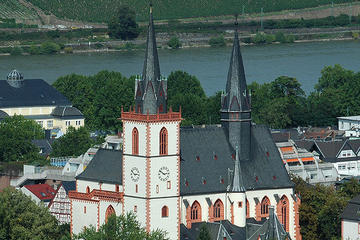 Bingen am Rhine
Bingen am Rhine Bingen am Rhine is at the southern gateway to the beautiful UNESCO World Heritage stretch of the upper Rhine River. Bingen has the long and fascinating history youd expect of a town in such an ideal location. The Romans started one of their famous roads here, Via Ausonia, and it is
Bingen am Rhine
Bingen am Rhine Bingen am Rhine is at the southern gateway to the beautiful UNESCO World Heritage stretch of the upper Rhine River. Bingen has the long and fascinating history youd expect of a town in such an ideal location. The Romans started one of their famous roads here, Via Ausonia, and it is
-
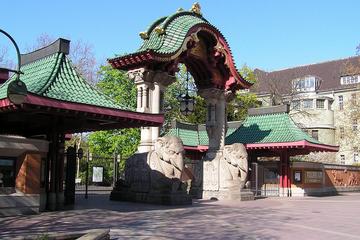 Berlin Zoo and Aquarium
Berlin Zoo and Aquarium Meet Knut the polar bear at the Berlin Zoo, along with a massive variety of marine creatures at the Zoo Aquarium. Berlin’s zoo celebrates diversity, from pandas to rhinos, and protects, studies and breeds the world’s most comprehensive collection of species. Many of the enc
Berlin Zoo and Aquarium
Berlin Zoo and Aquarium Meet Knut the polar bear at the Berlin Zoo, along with a massive variety of marine creatures at the Zoo Aquarium. Berlin’s zoo celebrates diversity, from pandas to rhinos, and protects, studies and breeds the world’s most comprehensive collection of species. Many of the enc
-
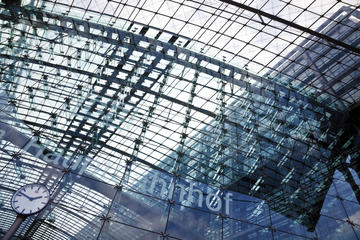 Berlin Hauptbahnhof
Berlin Hauptbahnhof The stylish, contemporary main railway station in Berlin was opened in 2006 by Chancellor Angela Merkel; it is built on the site of the Lehrter Bahnhof (Lehrte Station), which was demolished in 1957 after East Germany suspended rail services into its western counterpart. In 199
Berlin Hauptbahnhof
Berlin Hauptbahnhof The stylish, contemporary main railway station in Berlin was opened in 2006 by Chancellor Angela Merkel; it is built on the site of the Lehrter Bahnhof (Lehrte Station), which was demolished in 1957 after East Germany suspended rail services into its western counterpart. In 199
-
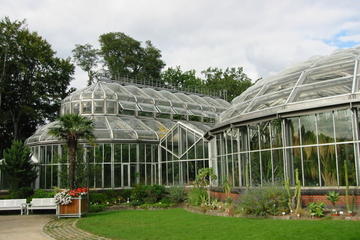 Berlin Botanical Garden and Botanical Museum
Berlin Botanical Garden and Botanical Museum The Berlin Botanical Garden is about 126 acres, making it one of the worlds largest botanical gardens, and it has approximately 22,000 types of plants. In the 39-acre plant-geography section, you can see plants from all over the northern hemisphere. The
Berlin Botanical Garden and Botanical Museum
Berlin Botanical Garden and Botanical Museum The Berlin Botanical Garden is about 126 acres, making it one of the worlds largest botanical gardens, and it has approximately 22,000 types of plants. In the 39-acre plant-geography section, you can see plants from all over the northern hemisphere. The
-
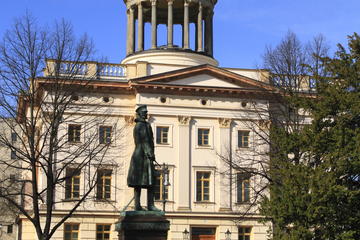 Berggruen Museum
Berggruen Museum A few years after the Berlin Wall came down, the director of Berlin museums made an offer to art lover Heinz Berggruen to display his collection in a vacant building now known as the Berggruen Museum, one of the most important museums of modern art in Berlin. Berggruens impressive
Berggruen Museum
Berggruen Museum A few years after the Berlin Wall came down, the director of Berlin museums made an offer to art lover Heinz Berggruen to display his collection in a vacant building now known as the Berggruen Museum, one of the most important museums of modern art in Berlin. Berggruens impressive
-
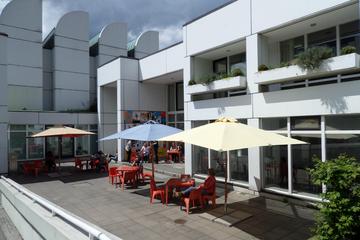 Bauhaus Archive Museum of Design
Bauhaus Archive Museum of Design The Bauhaus Archive Museum of Design is both a museum and a research institute in Berlin. It is a non-profit organization that was established in 1960, and it is dedicated to the history and the after-effects of the most significant art school of the 20th century.
Bauhaus Archive Museum of Design
Bauhaus Archive Museum of Design The Bauhaus Archive Museum of Design is both a museum and a research institute in Berlin. It is a non-profit organization that was established in 1960, and it is dedicated to the history and the after-effects of the most significant art school of the 20th century.
-
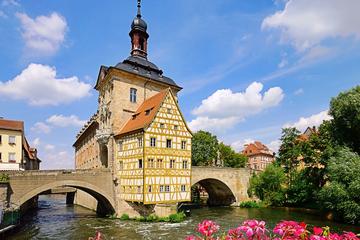 Bamberg
Bamberg One of the principal sights on Germany’s famous Castle Road, the UNESCO World Heritage Site of Bamberg is one of Europe’s largest intact medieval towns, with many of its historic buildings beautifully preserved. Boasting 1,000 years of history, Bamberg is a masterpiece of medieval architec
Bamberg
Bamberg One of the principal sights on Germany’s famous Castle Road, the UNESCO World Heritage Site of Bamberg is one of Europe’s largest intact medieval towns, with many of its historic buildings beautifully preserved. Boasting 1,000 years of history, Bamberg is a masterpiece of medieval architec
-
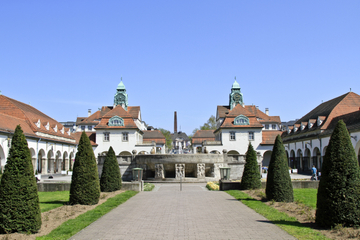 Bad Nauheim
Bad Nauheim Tucked in the foothills of the Taunus Mountains, just north of Frankfurt, the historic spa town of Bad Nauheim has been a popular wellness center for over 150 years, with its natural mineral-rich spring and salt waters renowned for their health benefits. Today, the health spas are stil
Bad Nauheim
Bad Nauheim Tucked in the foothills of the Taunus Mountains, just north of Frankfurt, the historic spa town of Bad Nauheim has been a popular wellness center for over 150 years, with its natural mineral-rich spring and salt waters renowned for their health benefits. Today, the health spas are stil
-
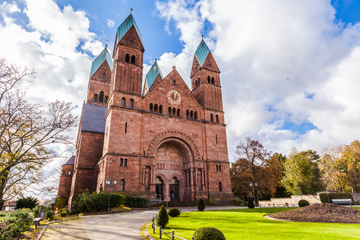 Bad Homburg
Bad Homburg Renowned as one of Germany’s wealthiest postal codes, the 19th-century spa town of Bad Homburg makes a popular day trip from neighboring Frankfurt, less than 30 minutes away. Owing its fame to its 14 natural mineral springs, Bad Homburg markets itself as a town of ‘champagne air’ and h
Bad Homburg
Bad Homburg Renowned as one of Germany’s wealthiest postal codes, the 19th-century spa town of Bad Homburg makes a popular day trip from neighboring Frankfurt, less than 30 minutes away. Owing its fame to its 14 natural mineral springs, Bad Homburg markets itself as a town of ‘champagne air’ and h
-
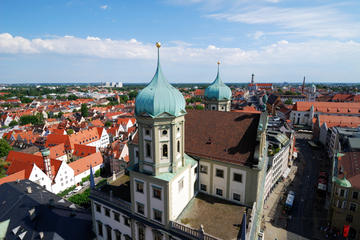 Augsburg
Augsburg Venerable Augsburg was settled in 15BC; along with remnants of the ancient city wall, you can see numerous antiquities in the Römisches Museum. But even more than its status as one of the few Roman settlements in Germany, Augsburg’s glory comes from its days as a center of trade and finan
Augsburg
Augsburg Venerable Augsburg was settled in 15BC; along with remnants of the ancient city wall, you can see numerous antiquities in the Römisches Museum. But even more than its status as one of the few Roman settlements in Germany, Augsburg’s glory comes from its days as a center of trade and finan
-
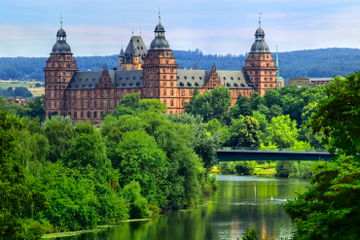 Aschaffenburg
Aschaffenburg The gateway to the idyllic Spessart Mountains, the popular holiday resort of Aschaffenburg is one of northern Bavaria’s most picturesque towns, renowned for its cozy inns, shopping boutiques and traditional wine taverns. The medieval heart of Aschaffenburg is its Old Town, and a walk
Aschaffenburg
Aschaffenburg The gateway to the idyllic Spessart Mountains, the popular holiday resort of Aschaffenburg is one of northern Bavaria’s most picturesque towns, renowned for its cozy inns, shopping boutiques and traditional wine taverns. The medieval heart of Aschaffenburg is its Old Town, and a walk
-
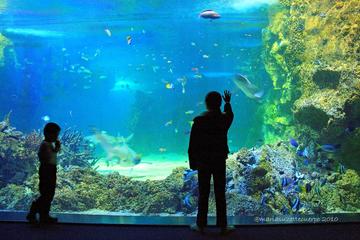 AquaDom & SEA LIFE Berlin
AquaDom & SEA LIFE Berlin AquaDom and SEA LIFE Berlin is an aquarium featuring more than 5,000 aquatic animals in over 35 different displays. The AquaDom, specifically, is the largest freestanding aquarium in the world, where you can take an elevator ride through 1 million liters of saltwater and
AquaDom & SEA LIFE Berlin
AquaDom & SEA LIFE Berlin AquaDom and SEA LIFE Berlin is an aquarium featuring more than 5,000 aquatic animals in over 35 different displays. The AquaDom, specifically, is the largest freestanding aquarium in the world, where you can take an elevator ride through 1 million liters of saltwater and
-
 Anti-Kriegs Museum
Anti-Kriegs Museum The first version of the Anti-War Museum, or Anti Kriegs Museum in German, was founded by Ernst Friedrich in Berlin in the 1920s. Before establishing the museum, he was an active member in an anti-military group and wrote a book called War Against War. Not surprisingly, his muse
Anti-Kriegs Museum
Anti-Kriegs Museum The first version of the Anti-War Museum, or Anti Kriegs Museum in German, was founded by Ernst Friedrich in Berlin in the 1920s. Before establishing the museum, he was an active member in an anti-military group and wrote a book called War Against War. Not surprisingly, his muse
-
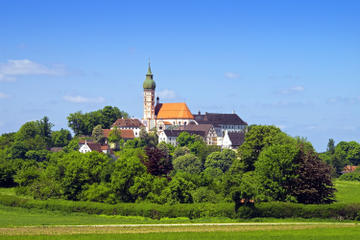 Andechs Monastery
Andechs Monastery Munich’s beer gardens are world famous but few offer such idyllic surroundings as the Andechs brewery, housed in the historic Andechs Monastery, 40km southwest of the city. Dating back to 1392, the Benedictine Abbey is perched atop the Holy Mountain of Heiliger Berg and overlooks
Andechs Monastery
Andechs Monastery Munich’s beer gardens are world famous but few offer such idyllic surroundings as the Andechs brewery, housed in the historic Andechs Monastery, 40km southwest of the city. Dating back to 1392, the Benedictine Abbey is perched atop the Holy Mountain of Heiliger Berg and overlooks
-
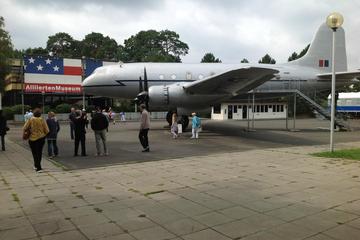 Allied Museum (Alliierten Museum)
Allied Museum (Alliierten Museum) The Allied Museum, or Alliierten Museum in German, explores the history of the Allies in Berlin from the end of World War II until a few years after the reunification of Germany. In the decades after the war, the conflicts of the Cold War between French, British,
Allied Museum (Alliierten Museum)
Allied Museum (Alliierten Museum) The Allied Museum, or Alliierten Museum in German, explores the history of the Allies in Berlin from the end of World War II until a few years after the reunification of Germany. In the decades after the war, the conflicts of the Cold War between French, British,
Total
2004 -travel
FirstPage PreviousPage NextPage LastPage CurrentPage:
7/101 20-travel/Page GoTo Page:
 Bundeswehr Museum of Military History
Bundeswehr Museum of Military History The Bundeswehr Museum of Military History shows the impact of the military on culture throughout history with a focus on aerial warfare. The exhibits explain how aerial warfare has changed our views on war through several different topics, such as crossing bor
Bundeswehr Museum of Military History
Bundeswehr Museum of Military History The Bundeswehr Museum of Military History shows the impact of the military on culture throughout history with a focus on aerial warfare. The exhibits explain how aerial warfare has changed our views on war through several different topics, such as crossing bor
 Brucke Museum
Brucke Museum The Brücke Museum in Berlin is dedicated to the work of the artist group Die Brücke (the Bridge) from 1905 to 1913. The group was formed in Dresden by four students, Ernst Ludwig Kirchner, Fritz Bleyl, Karl Schmidt-Rottluff and Erich Heckel, when its members started experimenting wit
Brucke Museum
Brucke Museum The Brücke Museum in Berlin is dedicated to the work of the artist group Die Brücke (the Bridge) from 1905 to 1913. The group was formed in Dresden by four students, Ernst Ludwig Kirchner, Fritz Bleyl, Karl Schmidt-Rottluff and Erich Heckel, when its members started experimenting wit
 Brohan Museum
Brohan Museum The Brohan Museum is dedicated to art from the Art Nouveau, Art Deco, and Functionalism periods. Rooms are set up with furniture, table settings, vases, pictures, carpets and sculptures to create an authentic view of living spaces from this time period. The museum highlights works by
Brohan Museum
Brohan Museum The Brohan Museum is dedicated to art from the Art Nouveau, Art Deco, and Functionalism periods. Rooms are set up with furniture, table settings, vases, pictures, carpets and sculptures to create an authentic view of living spaces from this time period. The museum highlights works by
 Bode Museum
Bode Museum As one of five museums on Museum Island, the Bode Museum, formerly the Kaiser- Friedrich Museum, houses three separate collections of sculptures and treasures: the Museum of Byzantine Art (art from the West-Roman and Byzantine Empires from the 3rd to the 15th century), the sculpture co
Bode Museum
Bode Museum As one of five museums on Museum Island, the Bode Museum, formerly the Kaiser- Friedrich Museum, houses three separate collections of sculptures and treasures: the Museum of Byzantine Art (art from the West-Roman and Byzantine Empires from the 3rd to the 15th century), the sculpture co
 Blue Wonder Bridge
Blue Wonder Bridge The Blue Wonder Bridge in Dresden spans across the Elbe River. It was finished in 1893, and at the time, this truss bridge was one of the longest bridges that was not supported by pillars. It was painted a brilliant blue color, which is how it got its name. Despite the fact that
Blue Wonder Bridge
Blue Wonder Bridge The Blue Wonder Bridge in Dresden spans across the Elbe River. It was finished in 1893, and at the time, this truss bridge was one of the longest bridges that was not supported by pillars. It was painted a brilliant blue color, which is how it got its name. Despite the fact that
 Bingen am Rhine
Bingen am Rhine Bingen am Rhine is at the southern gateway to the beautiful UNESCO World Heritage stretch of the upper Rhine River. Bingen has the long and fascinating history youd expect of a town in such an ideal location. The Romans started one of their famous roads here, Via Ausonia, and it is
Bingen am Rhine
Bingen am Rhine Bingen am Rhine is at the southern gateway to the beautiful UNESCO World Heritage stretch of the upper Rhine River. Bingen has the long and fascinating history youd expect of a town in such an ideal location. The Romans started one of their famous roads here, Via Ausonia, and it is
 Berlin Zoo and Aquarium
Berlin Zoo and Aquarium Meet Knut the polar bear at the Berlin Zoo, along with a massive variety of marine creatures at the Zoo Aquarium. Berlin’s zoo celebrates diversity, from pandas to rhinos, and protects, studies and breeds the world’s most comprehensive collection of species. Many of the enc
Berlin Zoo and Aquarium
Berlin Zoo and Aquarium Meet Knut the polar bear at the Berlin Zoo, along with a massive variety of marine creatures at the Zoo Aquarium. Berlin’s zoo celebrates diversity, from pandas to rhinos, and protects, studies and breeds the world’s most comprehensive collection of species. Many of the enc
 Berlin Hauptbahnhof
Berlin Hauptbahnhof The stylish, contemporary main railway station in Berlin was opened in 2006 by Chancellor Angela Merkel; it is built on the site of the Lehrter Bahnhof (Lehrte Station), which was demolished in 1957 after East Germany suspended rail services into its western counterpart. In 199
Berlin Hauptbahnhof
Berlin Hauptbahnhof The stylish, contemporary main railway station in Berlin was opened in 2006 by Chancellor Angela Merkel; it is built on the site of the Lehrter Bahnhof (Lehrte Station), which was demolished in 1957 after East Germany suspended rail services into its western counterpart. In 199
 Berlin Botanical Garden and Botanical Museum
Berlin Botanical Garden and Botanical Museum The Berlin Botanical Garden is about 126 acres, making it one of the worlds largest botanical gardens, and it has approximately 22,000 types of plants. In the 39-acre plant-geography section, you can see plants from all over the northern hemisphere. The
Berlin Botanical Garden and Botanical Museum
Berlin Botanical Garden and Botanical Museum The Berlin Botanical Garden is about 126 acres, making it one of the worlds largest botanical gardens, and it has approximately 22,000 types of plants. In the 39-acre plant-geography section, you can see plants from all over the northern hemisphere. The
 Berggruen Museum
Berggruen Museum A few years after the Berlin Wall came down, the director of Berlin museums made an offer to art lover Heinz Berggruen to display his collection in a vacant building now known as the Berggruen Museum, one of the most important museums of modern art in Berlin. Berggruens impressive
Berggruen Museum
Berggruen Museum A few years after the Berlin Wall came down, the director of Berlin museums made an offer to art lover Heinz Berggruen to display his collection in a vacant building now known as the Berggruen Museum, one of the most important museums of modern art in Berlin. Berggruens impressive
 Bauhaus Archive Museum of Design
Bauhaus Archive Museum of Design The Bauhaus Archive Museum of Design is both a museum and a research institute in Berlin. It is a non-profit organization that was established in 1960, and it is dedicated to the history and the after-effects of the most significant art school of the 20th century.
Bauhaus Archive Museum of Design
Bauhaus Archive Museum of Design The Bauhaus Archive Museum of Design is both a museum and a research institute in Berlin. It is a non-profit organization that was established in 1960, and it is dedicated to the history and the after-effects of the most significant art school of the 20th century.
 Bamberg
Bamberg One of the principal sights on Germany’s famous Castle Road, the UNESCO World Heritage Site of Bamberg is one of Europe’s largest intact medieval towns, with many of its historic buildings beautifully preserved. Boasting 1,000 years of history, Bamberg is a masterpiece of medieval architec
Bamberg
Bamberg One of the principal sights on Germany’s famous Castle Road, the UNESCO World Heritage Site of Bamberg is one of Europe’s largest intact medieval towns, with many of its historic buildings beautifully preserved. Boasting 1,000 years of history, Bamberg is a masterpiece of medieval architec
 Bad Nauheim
Bad Nauheim Tucked in the foothills of the Taunus Mountains, just north of Frankfurt, the historic spa town of Bad Nauheim has been a popular wellness center for over 150 years, with its natural mineral-rich spring and salt waters renowned for their health benefits. Today, the health spas are stil
Bad Nauheim
Bad Nauheim Tucked in the foothills of the Taunus Mountains, just north of Frankfurt, the historic spa town of Bad Nauheim has been a popular wellness center for over 150 years, with its natural mineral-rich spring and salt waters renowned for their health benefits. Today, the health spas are stil
 Bad Homburg
Bad Homburg Renowned as one of Germany’s wealthiest postal codes, the 19th-century spa town of Bad Homburg makes a popular day trip from neighboring Frankfurt, less than 30 minutes away. Owing its fame to its 14 natural mineral springs, Bad Homburg markets itself as a town of ‘champagne air’ and h
Bad Homburg
Bad Homburg Renowned as one of Germany’s wealthiest postal codes, the 19th-century spa town of Bad Homburg makes a popular day trip from neighboring Frankfurt, less than 30 minutes away. Owing its fame to its 14 natural mineral springs, Bad Homburg markets itself as a town of ‘champagne air’ and h
 Augsburg
Augsburg Venerable Augsburg was settled in 15BC; along with remnants of the ancient city wall, you can see numerous antiquities in the Römisches Museum. But even more than its status as one of the few Roman settlements in Germany, Augsburg’s glory comes from its days as a center of trade and finan
Augsburg
Augsburg Venerable Augsburg was settled in 15BC; along with remnants of the ancient city wall, you can see numerous antiquities in the Römisches Museum. But even more than its status as one of the few Roman settlements in Germany, Augsburg’s glory comes from its days as a center of trade and finan
 Aschaffenburg
Aschaffenburg The gateway to the idyllic Spessart Mountains, the popular holiday resort of Aschaffenburg is one of northern Bavaria’s most picturesque towns, renowned for its cozy inns, shopping boutiques and traditional wine taverns. The medieval heart of Aschaffenburg is its Old Town, and a walk
Aschaffenburg
Aschaffenburg The gateway to the idyllic Spessart Mountains, the popular holiday resort of Aschaffenburg is one of northern Bavaria’s most picturesque towns, renowned for its cozy inns, shopping boutiques and traditional wine taverns. The medieval heart of Aschaffenburg is its Old Town, and a walk
 AquaDom & SEA LIFE Berlin
AquaDom & SEA LIFE Berlin AquaDom and SEA LIFE Berlin is an aquarium featuring more than 5,000 aquatic animals in over 35 different displays. The AquaDom, specifically, is the largest freestanding aquarium in the world, where you can take an elevator ride through 1 million liters of saltwater and
AquaDom & SEA LIFE Berlin
AquaDom & SEA LIFE Berlin AquaDom and SEA LIFE Berlin is an aquarium featuring more than 5,000 aquatic animals in over 35 different displays. The AquaDom, specifically, is the largest freestanding aquarium in the world, where you can take an elevator ride through 1 million liters of saltwater and
 Anti-Kriegs Museum
Anti-Kriegs Museum The first version of the Anti-War Museum, or Anti Kriegs Museum in German, was founded by Ernst Friedrich in Berlin in the 1920s. Before establishing the museum, he was an active member in an anti-military group and wrote a book called War Against War. Not surprisingly, his muse
Anti-Kriegs Museum
Anti-Kriegs Museum The first version of the Anti-War Museum, or Anti Kriegs Museum in German, was founded by Ernst Friedrich in Berlin in the 1920s. Before establishing the museum, he was an active member in an anti-military group and wrote a book called War Against War. Not surprisingly, his muse
 Andechs Monastery
Andechs Monastery Munich’s beer gardens are world famous but few offer such idyllic surroundings as the Andechs brewery, housed in the historic Andechs Monastery, 40km southwest of the city. Dating back to 1392, the Benedictine Abbey is perched atop the Holy Mountain of Heiliger Berg and overlooks
Andechs Monastery
Andechs Monastery Munich’s beer gardens are world famous but few offer such idyllic surroundings as the Andechs brewery, housed in the historic Andechs Monastery, 40km southwest of the city. Dating back to 1392, the Benedictine Abbey is perched atop the Holy Mountain of Heiliger Berg and overlooks
 Allied Museum (Alliierten Museum)
Allied Museum (Alliierten Museum) The Allied Museum, or Alliierten Museum in German, explores the history of the Allies in Berlin from the end of World War II until a few years after the reunification of Germany. In the decades after the war, the conflicts of the Cold War between French, British,
Allied Museum (Alliierten Museum)
Allied Museum (Alliierten Museum) The Allied Museum, or Alliierten Museum in German, explores the history of the Allies in Berlin from the end of World War II until a few years after the reunification of Germany. In the decades after the war, the conflicts of the Cold War between French, British,